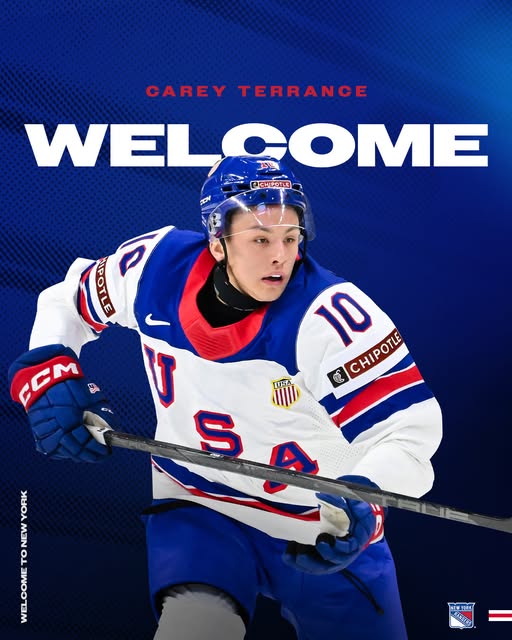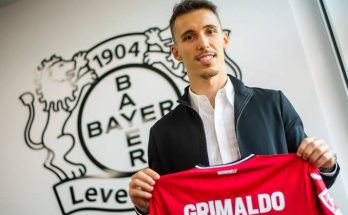Can Carey Be Ranger’s Next Star? All Eyes on Rising Talent to Deliver Like Kreider
The New York Rangers have long been a franchise defined by stars—Mark Messier, Brian Leetch, Henrik Lundqvist, and more recently, Chris Kreider. With every new season comes a fresh wave of speculation, excitement, and pressure, especially when a young talent rises through the ranks. This year, that spotlight is firmly fixed on Carey, the emerging forward whose mix of speed, strength, and hockey IQ has ignited hope in fans and coaches alike. The question is simple, but the implications are massive: Can Carey be the next homegrown hero to elevate the Rangers to greatness, much like Kreider has over the past decade?
Chris Kreider’s path to stardom wasn’t without its own bumps, but his defining trait has always been delivering in crucial moments. From his impactful playoff debut to his consistent presence as a top-six forward and goal-scorer, Kreider’s legacy in New York is cemented. For Carey, being compared to someone like Kreider is both a compliment and a challenge. It suggests immense potential, but also places him under a microscope few young players are prepared for. Still, those around the organization see something special—something that suggests Carey is more than just a fleeting talent.
The Rangers aren’t shy about their expectations. In fact, they’ve gone out of their way to create an environment in which Carey can thrive. He’s been given shifts with veterans, tested on special teams, and slotted into high-pressure game situations early in his tenure. That’s not something you do for just any rookie. The coaching staff clearly believes he has the makeup to become a franchise cornerstone. Rangers head coach Peter Laviolette has hinted at it repeatedly, noting Carey’s coachability, hunger, and how quickly he’s adapted to the pace and physicality of the NHL.
What sets Carey apart isn’t just his ability to flash highlight-reel plays. It’s his work away from the puck, his willingness to go to the dirty areas of the ice, and his mature decision-making that have insiders buzzing. There’s a certain poise he plays with that’s rare for someone so early in their professional career. It’s reminiscent of the early days of Kreider, when his combination of elite skating and high compete level made him an immediate fan favorite and a reliable asset during playoff runs.
The comparisons don’t stop at work ethic and impact, either. Statistically, Carey’s early numbers line up well with Kreider’s rookie campaign. In fewer minutes, Carey is producing more shots on goal, generating higher expected goals, and boasting a better Corsi rating, all while maintaining disciplined play. Advanced analytics paint a picture of a player whose presence on the ice tilts the game in the Rangers’ favor—an extremely promising indicator of long-term success.
Yet potential only means so much in the NHL, a league that devours promise if not paired with perseverance. Kreider himself took years to evolve into the consistent force he is today. He faced demotions, injuries, and criticism, but always bounced back stronger. For Carey, the path ahead won’t be linear. There will be growing pains. There will be games where the puck just won’t bounce his way, or when opponents exploit his inexperience. The key will be how he responds.
Fortunately, Carey appears to have the mental makeup required to succeed under pressure. Those who know him best describe him as obsessed with improvement. He watches game tape relentlessly, often staying back after practice to refine his shot or footwork. He’s known to ask veteran teammates detailed questions during intermissions and often picks the brain of the coaching staff. This level of engagement is rare and encouraging. It’s not hard to see why the Rangers brass believes he’s ready to shoulder a bigger role moving forward.
Another significant advantage for Carey is the mentorship available in the locker room. Veterans like Kreider, Mika Zibanejad, and Barclay Goodrow provide a solid support system, and Kreider in particular has taken Carey under his wing. Their bond reportedly goes beyond the rink. Kreider sees shades of his younger self in Carey and has made a concerted effort to help guide him through the mental and physical rigors of being a Ranger. That kind of mentorship can be invaluable. The pressure of playing in New York is unlike any other market, and having someone like Kreider to lean on could be the difference between good and great.
Beyond the internal dynamics, there’s a broader narrative to consider. The Rangers are at a crossroads. With a talented core that includes Artemi Panarin, Igor Shesterkin, Adam Fox, and Zibanejad, the window for a legitimate Stanley Cup run is wide open—but not forever. Integrating young players like Carey into meaningful roles isn’t just a luxury, it’s a necessity. Depth and youth are critical in a long playoff campaign, and if Carey can blossom into a consistent contributor, he could be the X-factor that pushes the Rangers over the top.
There’s also the business side of hockey to think about. In an age of salary cap gymnastics and roster churn, having high-impact players on entry-level or team-friendly deals allows for more flexibility. If Carey can continue his upward trajectory, he becomes a cost-controlled weapon that allows the front office to make bolder moves at the deadline or in free agency. The impact of a young player excelling goes far beyond the scoresheet—it reverberates through every aspect of team-building strategy.
For fans, the excitement is palpable. Carey jerseys are starting to appear in the crowd, and social media is rife with clips and commentary dissecting every shift he takes. There’s an emotional investment forming—one that only intensifies if the player lives up to the hype. The Rangers faithful are some of the most passionate in sports, and they don’t bestow their loyalty lightly. If Carey continues to produce and play with heart, he’ll find himself embraced by Madison Square Garden like few before him.
Still, it’s important to maintain perspective. Kreider didn’t become Kreider overnight. His journey was marked by learning experiences, evolution, and patience. Carey will need time to develop into his fullest form, and the organization must resist the urge to overload him too soon. The balance between opportunity and expectation will be key. Letting him find his rhythm, make mistakes, and grow at a sustainable pace will set him up for the long haul.
There’s no doubt Carey has the tools to succeed. He has the skillset, the support, the mentality, and the platform. What remains is how he puts it all together in the months and years to come. The comparison to Kreider isn’t just a reflection of potential—it’s a standard. It’s a challenge. And it’s a call to action for Carey to write his own legacy while honoring the one being handed to him.
Whether or not Carey becomes the next star in the Rangers galaxy will ultimately be determined not in a single game or season, but in the culmination of consistency, resilience, and impact. But for now, as the puck drops on another high-stakes campaign, all eyes are on Carey. And if the early signs are any indication, New York might just be witnessing the birth of its next beloved icon.



